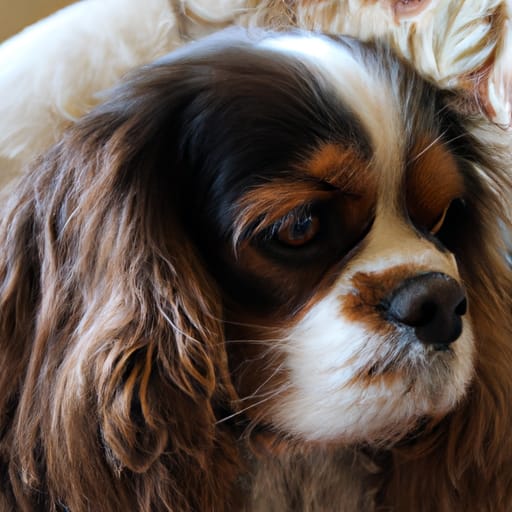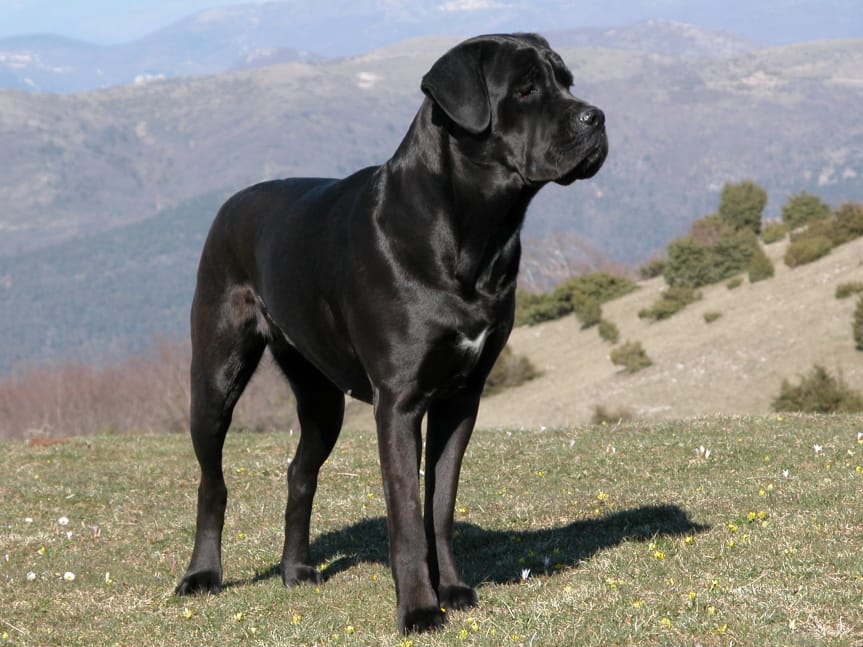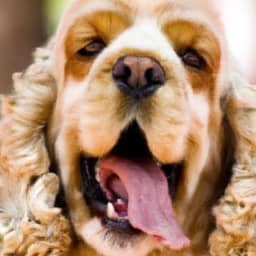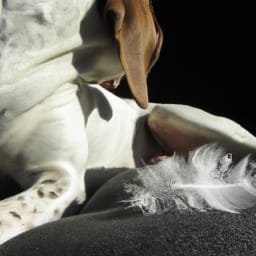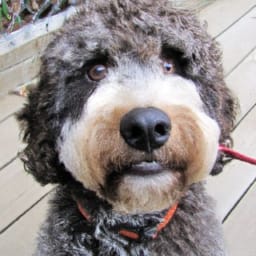Cavalier King Charles Spaniel Shedding: Why Do Cavalier King Charles Spaniels Shed?
Do Cavalier King Charles Spaniels Shed? If you own a Cavalier King Charles Spaniel or are considering getting one, you may have heard about their shedding. In this article, we will explore why these adorable pups shed and what you can do to manage their shedding. Whether you’re a seasoned dog owner or a first-time owner, understanding the shedding patterns of Cavalier King Charles Spaniels can help you create a happy and healthy environment for your furry friend. Let’s dive in and find out why these delightful companions shed!

Causes of Shedding
Genetics and Breed Characteristics
Shedding is a natural process for Cavalier King Charles Spaniels, as it is for many other dog breeds. Genetics play a significant role in determining the coat type and shedding patterns of these dogs. Cavaliers have a double coat consisting of a soft and silky outer layer and a dense, insulating undercoat. This combination of coat types makes them prone to shedding. Additionally, the breed’s long, flowing hair contributes to the shedding process, as it is more likely to become tangled and shed.
Poor Nutrition and Diet
A balanced and nutritious diet is essential for maintaining a healthy coat and minimizing shedding in Cavalier King Charles Spaniels. If your dog’s diet lacks essential nutrients, their coat may become dry, brittle, and prone to excessive shedding. It is important to provide your Cavalier with high-quality dog food that meets their specific nutritional needs. Consult with your veterinarian to determine the best diet for your furry friend.
Hormonal Changes
Hormonal changes can also contribute to shedding in Cavaliers. Female dogs experience more significant shedding during heat cycles, as their hormone levels fluctuate. Additionally, hormonal imbalances, such as thyroid issues, can lead to excessive shedding. It is important to consult with your vet if you suspect hormonal issues are causing your Cavalier’s shedding.
Seasonal Shedding
Seasonal shedding is a natural process for many dog breeds, including Cavalier King Charles Spaniels. As the seasons change, dogs often shed their old coat to make way for a new one that is better suited for the upcoming weather. Cavaliers typically experience more shedding during the spring and fall seasons. During these times, their coat may appear to be coming out in clumps or shedding more than usual.
Health Conditions
Certain health conditions can cause excessive shedding in Cavalier King Charles Spaniels. Skin infections, allergies, parasitic infestations, and underlying medical conditions can all contribute to increased shedding. If you notice your Cavalier’s shedding is accompanied by other symptoms, such as irritated or inflamed skin, bald patches, changes in coat texture, or behavioral changes, it is important to seek veterinary help to rule out any underlying health issues.
Managing Shedding
Regular Grooming
Regular grooming plays a crucial role in managing shedding in Cavalier King Charles Spaniels. Brushing your dog’s coat on a regular basis helps to remove loose and dead hair before it can be shed around your home. It also helps to distribute the natural oils in their coat, keeping it healthy and reducing shedding. Use a brush specifically designed for long-haired dogs and be gentle to avoid harming their delicate skin.
Balanced Diet
A balanced and nutritious diet is not only essential for preventing excessive shedding but also for overall health and well-being. Ensure that your Cavalier is receiving a diet that is rich in essential nutrients, such as omega-3 fatty acids, which promote a healthy coat and reduce shedding. Consult with your veterinarian to determine the best diet plan and any necessary dietary supplements for your furry friend.
Supplements for Healthy Coat
In addition to a balanced diet, certain supplements can promote a healthy coat and reduce shedding in Cavalier King Charles Spaniels. Omega-3 fatty acid supplements, such as fish oil, are commonly recommended to support coat health and reduce shedding. These supplements can help improve the overall quality of your dog’s coat and decrease the amount of loose hair they shed.
Proper Hydration
Proper hydration is crucial for maintaining a healthy coat and reducing shedding. Ensure that your Cavalier always has access to fresh and clean water. Dehydration can lead to dry and brittle hair, making it more prone to shedding. Additionally, well-hydrated dogs have healthier skin, which helps minimize shedding. Monitor your dog’s water intake and consult with your vet if you have concerns about their hydration levels.
Regular Exercise
Regular exercise not only keeps your Cavalier physically fit but also contributes to a healthy coat and reduced shedding. Exercise promotes good circulation, which helps deliver essential nutrients to the hair follicles and encourages a healthy coat. It is important to provide your dog with regular exercise opportunities, such as daily walks or playtime in a fenced yard.
Avoiding Stress
Stress can contribute to excessive shedding in Cavaliers. Dogs are sensitive creatures, and stressful situations can negatively impact their overall health, including their coat. Avoid exposing your Cavalier to stressful environments or situations as much as possible. Create a calm and peaceful environment at home and provide your dog with plenty of mental and physical stimulation.
Preventing Excessive Shedding
Brushing Techniques
Effective brushing techniques are key to preventing excessive shedding in Cavalier King Charles Spaniels. When brushing your dog’s coat, start at the roots and gently work your way to the tip to remove any tangles or mats. Be careful not to pull on the hair, as this can cause discomfort or even pain. Use a brush or comb specifically designed for long-haired dogs to effectively remove loose and dead hair.
Professional Grooming
Regular visits to a professional groomer can be beneficial in preventing excessive shedding in Cavaliers. Professional groomers have the expertise and tools necessary to properly groom and maintain your dog’s coat. They can perform thorough brushing, remove any mats or tangles, and give your dog a trim if necessary. Grooming sessions also provide an opportunity for a professional to assess your Cavalier’s overall coat health and identify any potential issues.
Bathing Tips
Proper bathing techniques can help reduce shedding in Cavalier King Charles Spaniels. When bathing your dog, use a shampoo specifically formulated for dogs with long coats. Thoroughly rinse your dog’s coat to remove any shampoo residue, as it can contribute to dryness and increased shedding. Avoid excessive bathing, as it can strip the coat of its natural oils and lead to dryness. Aim for bathing your Cavalier every 4-6 weeks, or as recommended by your veterinarian.
Regular Coat Trims
Regular coat trims can help manage shedding in Cavaliers, particularly for those with longer coats. Trimming the hair around the paws, ears, and tail can prevent excessive matting and tangling, which can lead to increased shedding. However, be cautious not to trim the coat too short, as Cavaliers rely on their coat for insulation and protection from the elements.
Minimizing Environmental Allergens
Minimizing exposure to environmental allergens can help prevent excessive shedding in Cavaliers with allergies. Allergies can contribute to itchiness, irritated skin, and increased shedding. Keep your home clean and free from dust, pollen, and other potential allergens. Regularly wash your dog’s bedding, vacuum your home, and consider using air purifiers to improve air quality. If environmental allergies are suspected, consult with your veterinarian for appropriate treatment options.
Coping with Shedding
Using Pet Hair Tools and Accessories
Using pet hair tools and accessories can help you effectively manage and cope with shedding in Cavalier King Charles Spaniels. Investing in a high-quality brush or comb designed specifically for long-haired dogs can make a significant difference in removing loose and dead hair from your dog’s coat. Additionally, lint rollers and sticky tape can be useful for removing shed hair from your clothing and furniture.
Cleaning and Removing Shed Hair
Regular cleaning and removal of shed hair from your home is essential when coping with shedding. Vacuuming your floors, furniture, and rugs helps to eliminate loose hair and prevent it from spreading throughout your home. Use a suction vacuum cleaner with a brush attachment to effectively remove hair from carpets and upholstery. Additionally, it is a good practice to wipe down surfaces with a damp cloth to collect any loose hair.
Protecting Furniture and Bedding
If you want to protect your furniture and bedding from excessive shedding, there are various strategies you can employ. Consider using protective covers or throws on your couches and chairs to minimize the accumulation of hair. Encourage your Cavalier to have designated areas where they can relax and sleep, such as dog beds or blankets, to concentrate shedding in specific areas. Regularly washing removable covers or throws can also help keep them hair-free.
Reducing Allergy Symptoms
For individuals with allergies, coping with shedding can be particularly challenging. If you or someone in your household suffers from allergies, there are steps you can take to reduce allergy symptoms. Keep your home well-ventilated by opening windows or using fans to improve air circulation. Use HEPA filters in your home or consider investing in an air purifier to capture allergens in the air. Regularly washing your hands and keeping your living spaces clean can also help minimize allergy symptoms.

Signs of Shedding Problems
Excessive Hair Loss
Excessive hair loss is a clear sign that shedding has become a problem in Cavalier King Charles Spaniels. If you notice your dog is shedding significantly more hair than usual or if clumps of hair are coming out, it is important to investigate the cause. Excessive shedding can be an indication of an underlying health issue, such as hormonal imbalances or dermatological conditions. Consult with your veterinarian to determine the cause and appropriate treatment for your dog’s excessive shedding.
Irritated or Inflamed Skin
If your Cavalier’s skin appears irritated, red, or inflamed, it could be a sign that shedding has become problematic. Excessive shedding can sometimes cause discomfort or even lead to skin infections. Monitor your dog’s skin closely during shedding periods and seek veterinary help if you notice any signs of inflammation or irritation. Your vet can determine the underlying cause and recommend appropriate treatment options.
Bald Patches
The presence of bald patches is a concerning sign of shedding problems in Cavalier King Charles Spaniels. If you notice areas on your dog’s coat where hair is completely absent or significantly thinner, it may be indicative of an underlying issue. Bald patches can be caused by various factors, including allergies, parasites, or hormonal imbalances. It is important to have your dog examined by a veterinarian to determine the cause and appropriate treatment.
Changes in Coat Texture
Any noticeable changes in your Cavalier’s coat texture during shedding periods should be addressed. If you observe the coat becoming dull, dry, or brittle, it may indicate a problem with shedding. Changes in coat texture can be a result of nutritional deficiencies, lack of proper grooming, or underlying health conditions. Consult with your veterinarian to determine the cause and appropriate measures to restore your dog’s coat health.
Behavioral Changes
Behavioral changes can be an indirect sign of shedding problems in Cavalier King Charles Spaniels. Excessive shedding can cause discomfort, itchiness, or pain, which may lead to changes in your dog’s behavior. They may exhibit increased scratching, biting at their skin, or general restlessness. If you notice any behavioral changes in conjunction with shedding, it is crucial to consult with your veterinarian to determine the underlying cause and provide appropriate treatment.
When to Seek Veterinary Help
Persistent and Excessive Shedding
If your Cavalier’s shedding persists or becomes excessively heavy despite your efforts to manage it, it is recommended to seek veterinary help. Persistent and excessive shedding can indicate an underlying health issue that requires medical attention. Your vet can conduct a thorough examination, perform necessary tests, and determine the cause of the excessive shedding. They will then recommend appropriate treatment options to manage and reduce shedding.
Sudden Changes in Shedding Patterns
If you notice sudden changes in your Cavalier’s shedding patterns, it may be a cause for concern. For example, if your dog has always shed moderately but suddenly starts shedding excessively, it could signal an underlying problem. Sudden changes in shedding patterns can be indicative of hormonal imbalances, allergies, or other health issues. Contact your veterinarian to discuss the changes and determine if further evaluation is necessary.
Presence of Skin Infections or Parasites
The presence of skin infections or parasites alongside shedding requires immediate veterinary attention. Skin infections, such as bacterial or fungal infections, can worsen shedding and lead to further complications if left untreated. Similarly, parasitic infestations, such as fleas or mites, can cause excessive itching and hair loss. Your veterinarian will diagnose the condition, prescribe appropriate medications, and provide guidance on managing the shedding and addressing the underlying issue.
Unexplained Health Issues
If your Cavalier is experiencing unexplained health issues in addition to shedding, it is crucial to seek veterinary help. Shedding can sometimes be a symptom of an underlying health problem that needs to be addressed. Unexplained health issues can range from lethargy and loss of appetite to gastrointestinal or respiratory problems. Your veterinarian will conduct a thorough examination, perform diagnostic tests if necessary, and provide appropriate treatment based on their findings.
Tips for Allergy Sufferers
Regular Cleaning and Vacuuming
For individuals who suffer from allergies, regular cleaning and vacuuming are essential to manage shedding in Cavalier King Charles Spaniels. Dust, dander, and shed hair can trigger allergic reactions. Vacuum your home frequently, paying close attention to carpets, rugs, and furniture. Additionally, dust surfaces, wash bedding regularly, and use allergen-proof covers on pillows and mattresses. Minimizing allergens in your living environment can help reduce allergy symptoms.
Using Air Purifiers
Air purifiers are effective tools for reducing allergens in the air, including pet dander and hair. Investing in a high-quality air purifier with a HEPA filter can help capture and remove airborne allergens, providing cleaner and fresher air for allergy sufferers. Place the air purifier in rooms where you spend the most time, such as the bedroom or living room, to maximize its benefits.
Keeping the Dog out of Bedrooms
To minimize exposure to allergens, consider keeping your Cavalier out of bedrooms, especially if you or someone in your household has allergies. Bedrooms should be designated as allergen-free zones to provide a safe space for allergy sufferers to sleep and relax. This helps reduce the amount of hair and dander present in the bedroom, reducing allergic reactions during sleep.
Allergy Medication and Immunotherapy
For individuals with severe allergies, allergy medication or immunotherapy may be necessary to manage symptoms. Consult with an allergist or veterinarian to determine the most appropriate medication or treatment plan for your specific allergies. Allergy medications, such as antihistamines or nasal sprays, can help alleviate symptoms, while immunotherapy may provide long-term relief by desensitizing the body to specific allergens.
Considering Hypoallergenic Breeds
If allergies are a significant concern, you may consider choosing a hypoallergenic breed, as they typically shed less and produce fewer allergens. While no breed is completely hypoallergenic, some breeds, such as Poodles or Bichon Frises, are known to be more compatible with allergy sufferers. However, it is important to note that individual reactions can vary, so spend time with the breed you are considering to assess your personal sensitivity.
FAQs
Is shedding common in Cavalier King Charles Spaniels?
Yes, shedding is common in Cavalier King Charles Spaniels. They have a double coat consisting of a soft and silky outer layer and a dense undercoat, which contributes to shedding.
How often do they shed?
Cavaliers typically shed moderately throughout the year with heavier shedding occurring during the spring and fall seasons.
Are Cavaliers hypoallergenic?
No, Cavaliers are not considered hypoallergenic. They shed, and their dander can still cause allergies in susceptible individuals. However, some people with allergies may find Cavaliers more tolerable compared to other breeds.
Do Cavaliers shed more during certain seasons?
Yes, Cavaliers tend to shed more during the spring and fall seasons. During these times, they shed their winter or summer coat to make way for a new coat that is suitable for the changing weather.
Can shedding be prevented?
While shedding is a natural process, there are measures that can be taken to manage and minimize shedding in Cavaliers. Regular grooming, a balanced diet, and a healthy lifestyle can help reduce the amount of shedding.
What is the best grooming routine for a Cavalier?
A regular grooming routine for a Cavalier should include regular brushing to remove loose hair, prevent tangles, and distribute natural oils. Bathing should be done every 4-6 weeks using a shampoo formulated for long-haired dogs. Trimming the hair around the paws, ears, and tail can also prevent excessive shedding. Consult with a professional groomer for guidance on maintaining your Cavalier’s coat.


